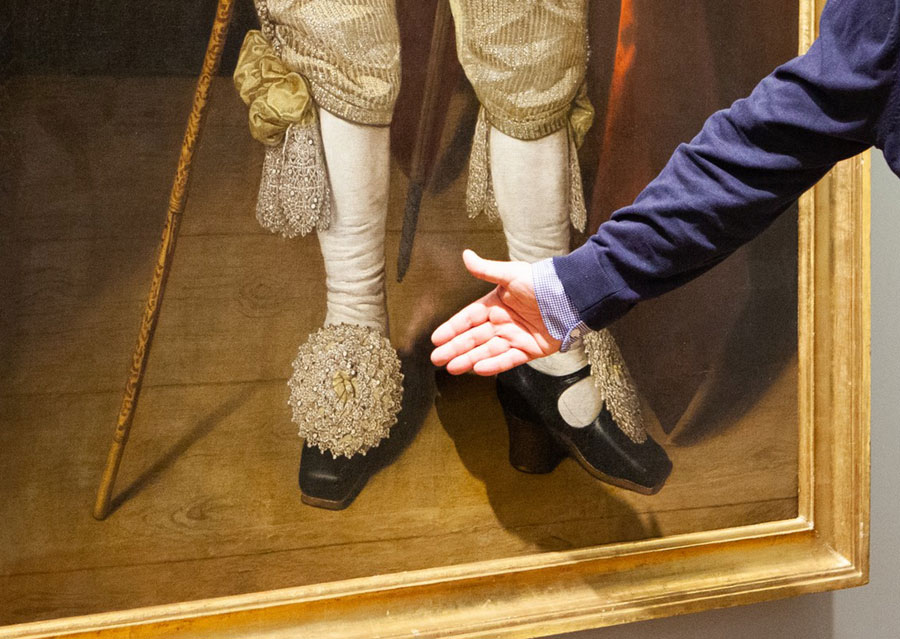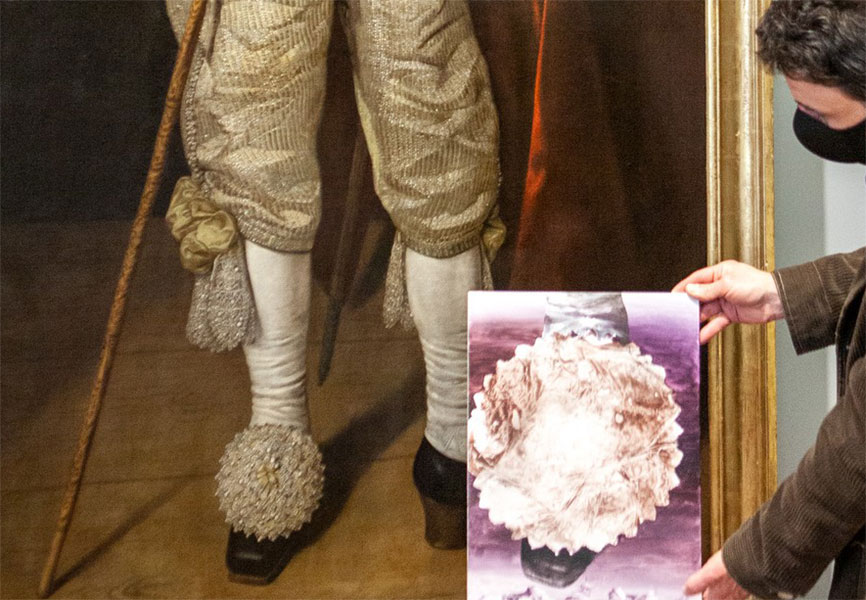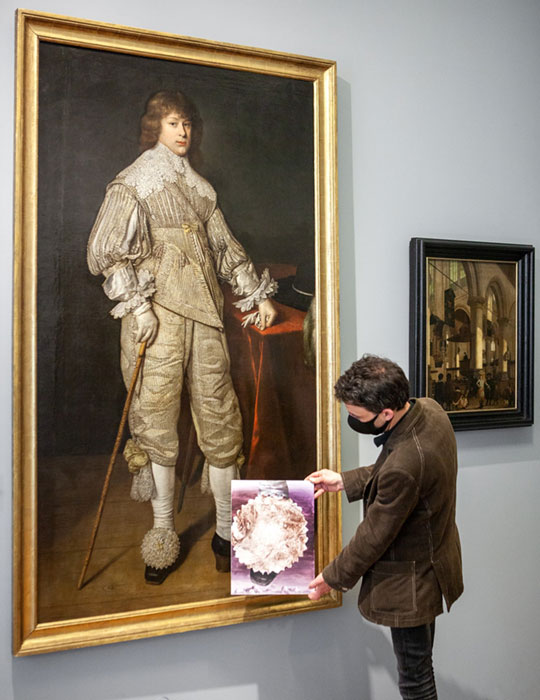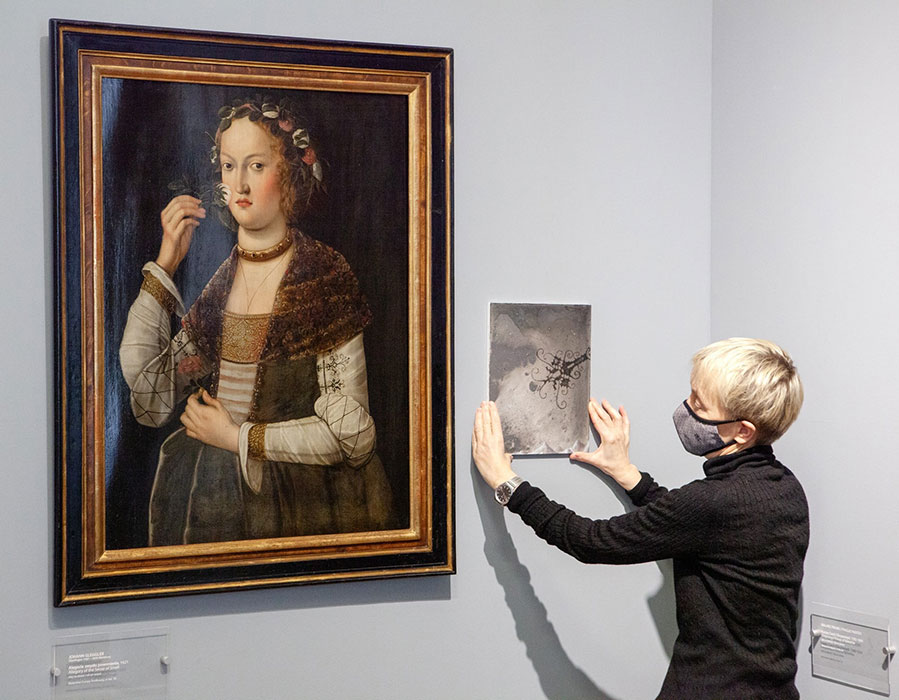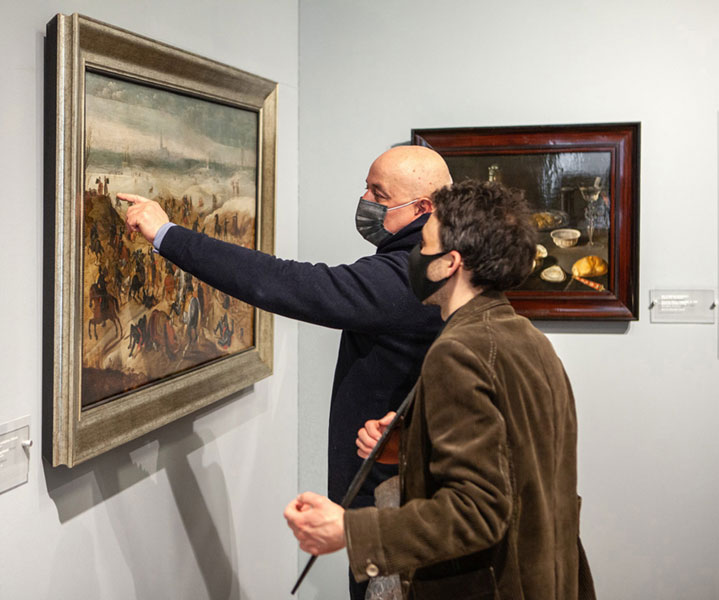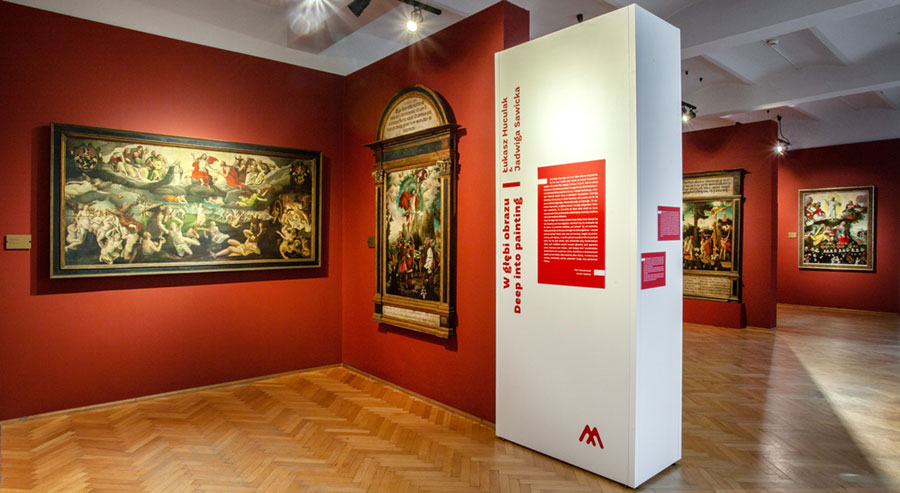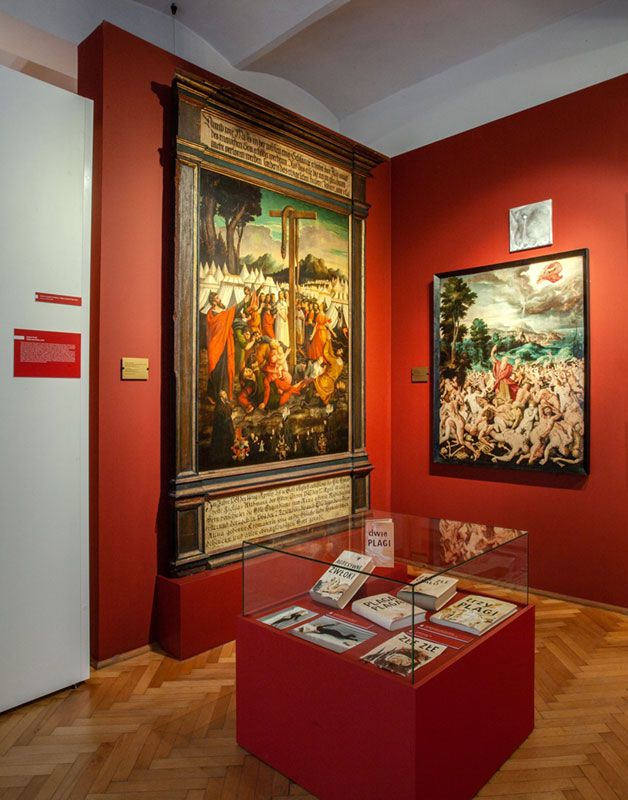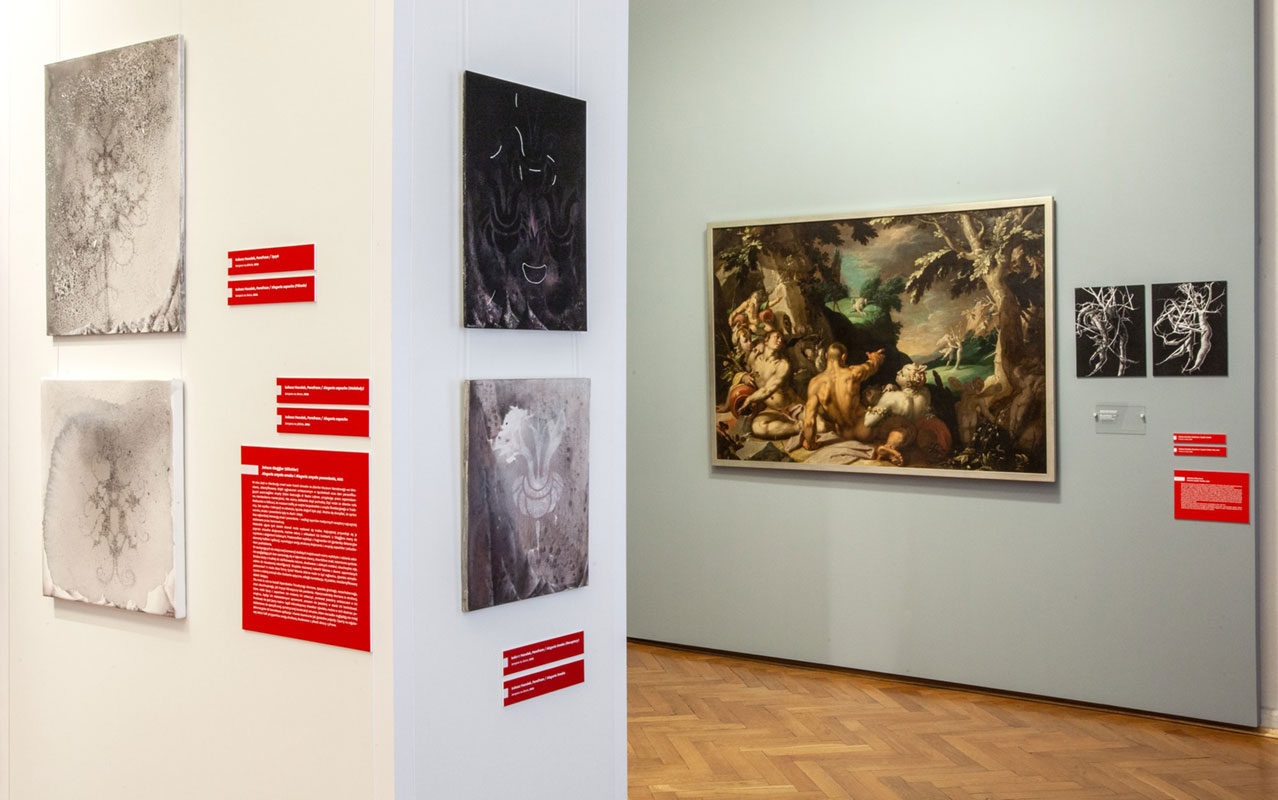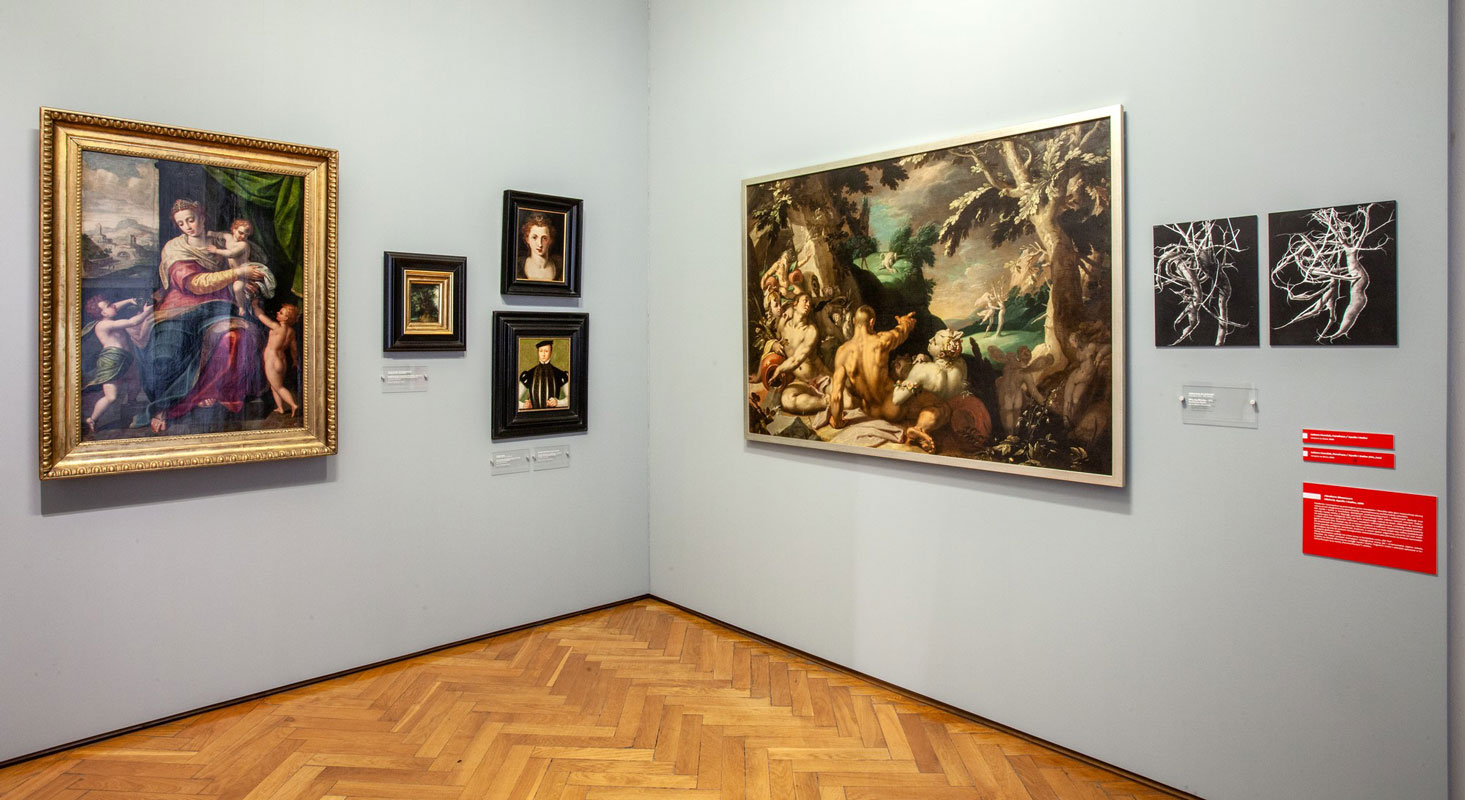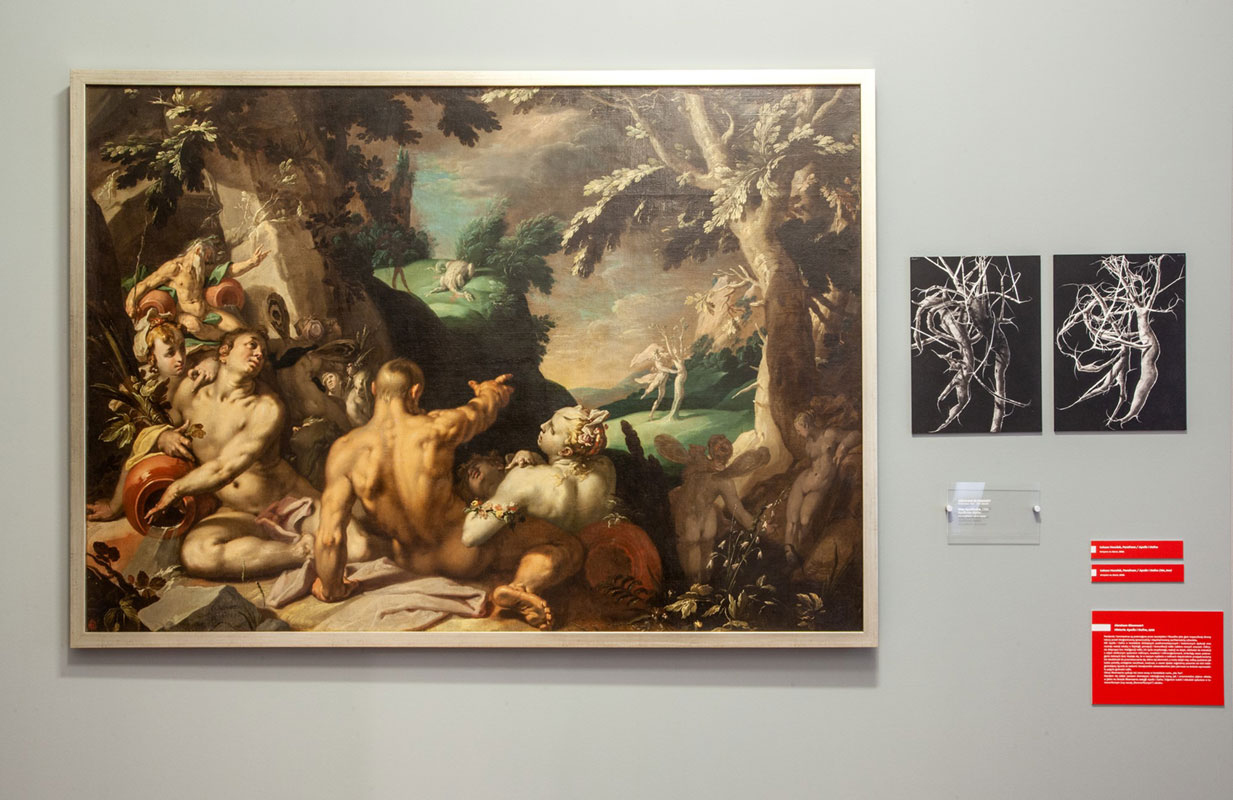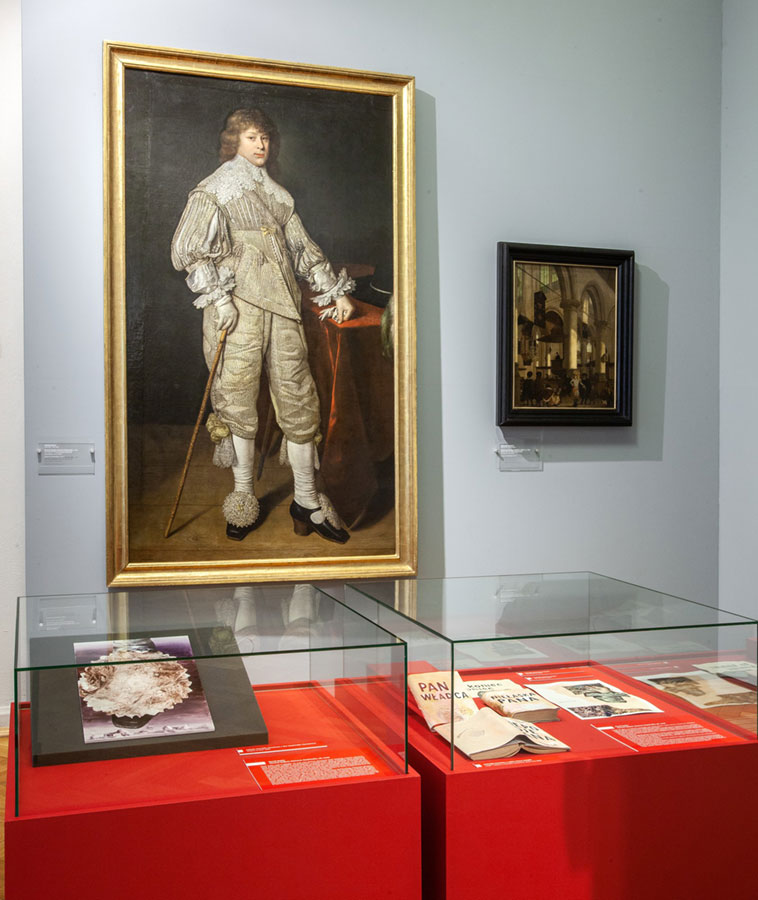Łukasz Huculak | Jadwiga Sawicka
23 March – 25 July 2021
Curated by dr hab. Piotr Oszczanowski
The extravagant, pompon-like metallic lace rosette decorating the elegantly shod foot of the young Prince Janusz Radziwiłł on his 1630s portrait by David Bailly: what does it resemble? And what associations come to mind as one admires the heeled shoe itself? Which paintings from the collection of the National Museum in Wrocław may be interpreted in the light of recent discoveries concerning the intelligence of plants. Modern artists embark upon explorative expeditions deep into Old Masters’ paintings, discovering unexpected connections. They take us along and encourage to look at the familiar paintings in a new way.
The project initiators Łukasz Huculak (Department of Painting, Academy of Art and Design in Wrocław) and Jadwiga Sawicka (Art Institute, Rzeszów University) have created works inspired by paintings from the collection of the National Museum in Wrocław. They have reinterpreted the chosen paintings’ select minor fragments, seemingly of secondary importance, in the context of current world crises. Their discreet “updating” of historic motifs enriches the museum narrative, bridging the past and present.
“To modern man, the Museum and its collections may provide a metaphorical shelter and at the same time w mirror in which, if we look closely, we may discover the reflection of our current emotions and concerns” – explain the artists. “Reaching deep into the paintings of the past, we search for fragments that we feel connect to what we are going through now.
These historic paintings are important not only because of their brilliant artistry but also because of their human interest and – in some cases – local Silesian and Wrocław contexts. They reflected the lives of real people, the challenges they faced, and the spirit of the turbulent times – and today we can relate to all these aspects. The message of art may help one survive yet another lockdown but it must be decoded: the process and its results may bring not only intellectual and aesthetic satisfaction but also spiritual consolation.”

